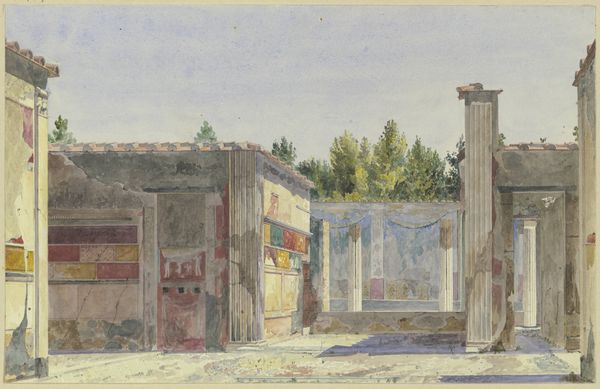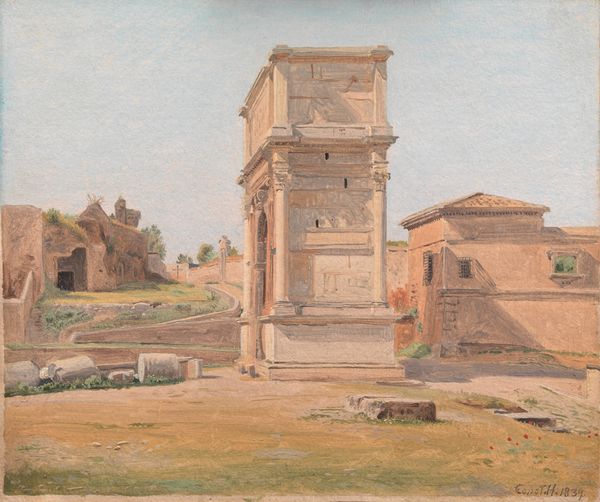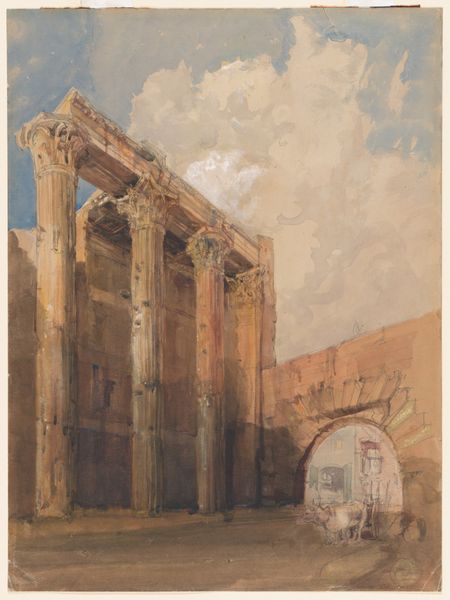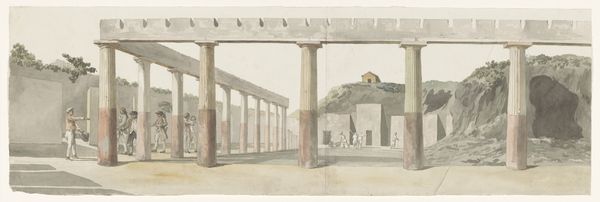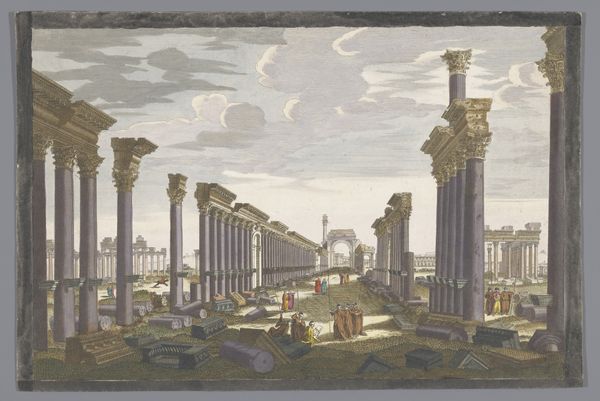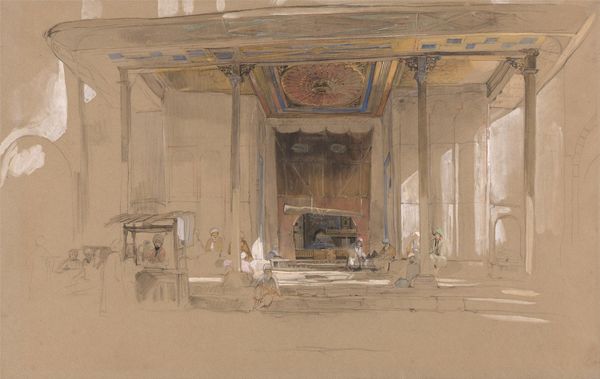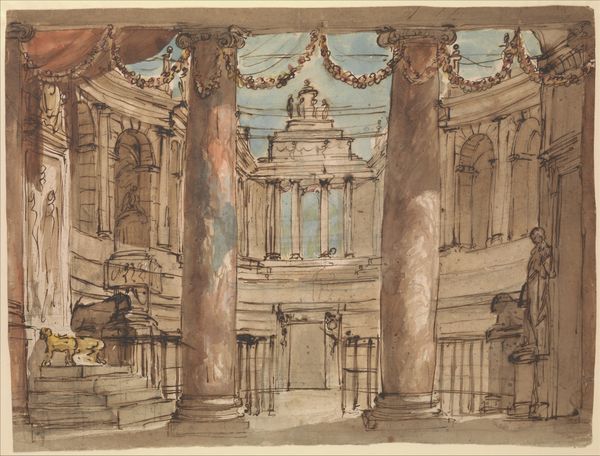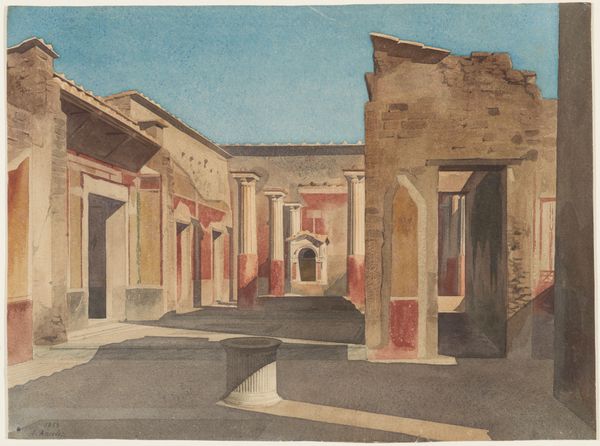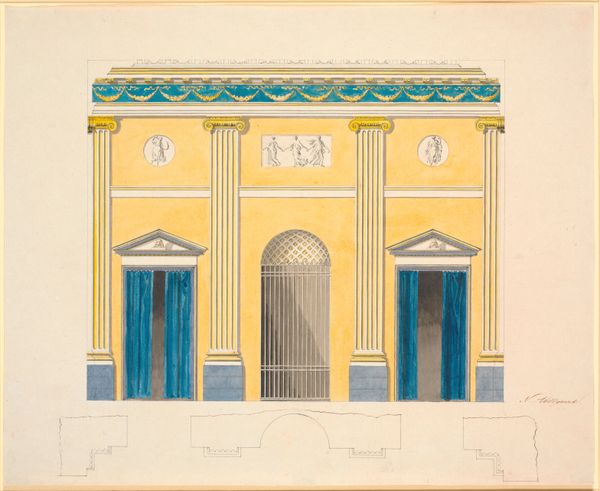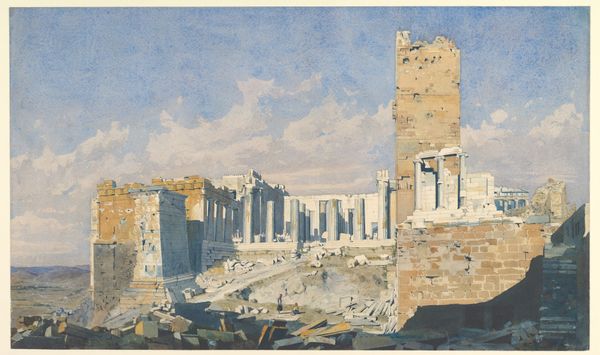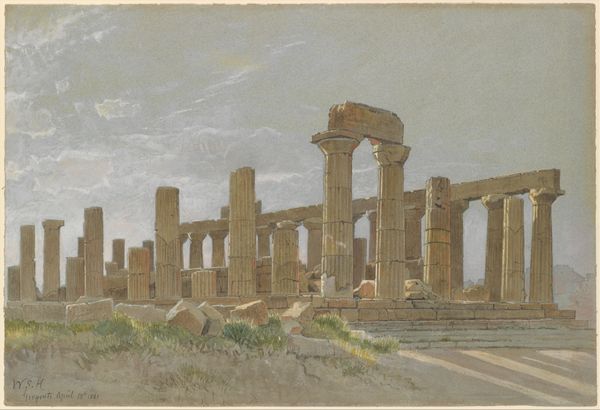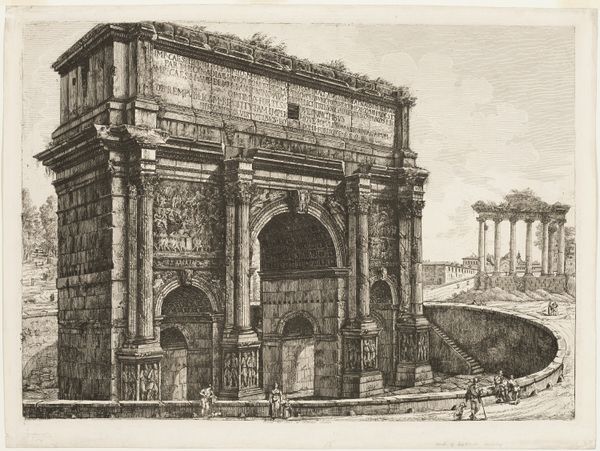
drawing, painting, paper, watercolor, architecture
#
drawing
#
16_19th-century
#
neoclassicism
#
painting
#
landscape
#
paper
#
oil painting
#
watercolor
#
watercolour illustration
#
history-painting
#
watercolor
#
architecture
Copyright: Public Domain
Editor: So this is "Die Casa de Meleagro in Pompeji," created in 1839 by Carl Werner, rendered in watercolor and oil on paper. It has such a serene, almost melancholic atmosphere to it. What do you see in this piece that jumps out at you? Curator: What interests me most is how Werner's choice of materials highlights the labor involved in both the original construction of the Casa and its subsequent excavation and documentation. The watercolor medium, typically associated with sketching and preliminary studies, elevates the craft of architectural rendering. Editor: How so? Curator: By meticulously depicting the architectural details of the excavated ruins with watercolor, Werner emphasizes the act of reconstruction—not of the building itself, but of our understanding of its materiality. The oil paint subtly hints at a veneer, masking labor by creating beauty and depth. Consider the implications of documenting ruins – isn’t it about control of narrative and shaping historical interpretation? Editor: That’s a good point. It's not just about the beautiful, decaying architecture; it’s also about the processes that went into uncovering and representing it. Curator: Exactly. Think about the laborers who painstakingly unearthed these objects. Werner's artwork here is part of a process, from raw material to architectural structure, from rediscovery to art object in a museum. How does this rendering participate in the larger systems of resource extraction and historical narrative-making? What purpose is served? Editor: It's made me reconsider what this painting is ‘of.’ It's less about romanticizing the ruins and more about the complex, interwoven acts of labor, materiality, and representation that define our relationship to the past. Thanks, that's really insightful! Curator: My pleasure! It’s always exciting to find new ways of relating material to cultural work.
Comments
No comments
Be the first to comment and join the conversation on the ultimate creative platform.
